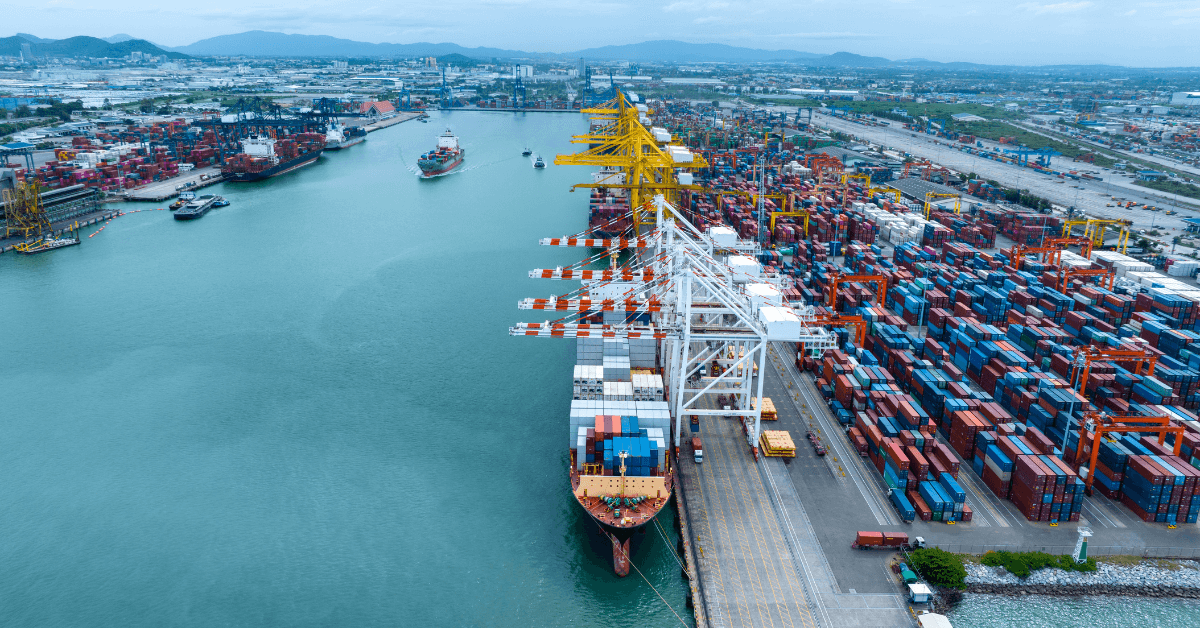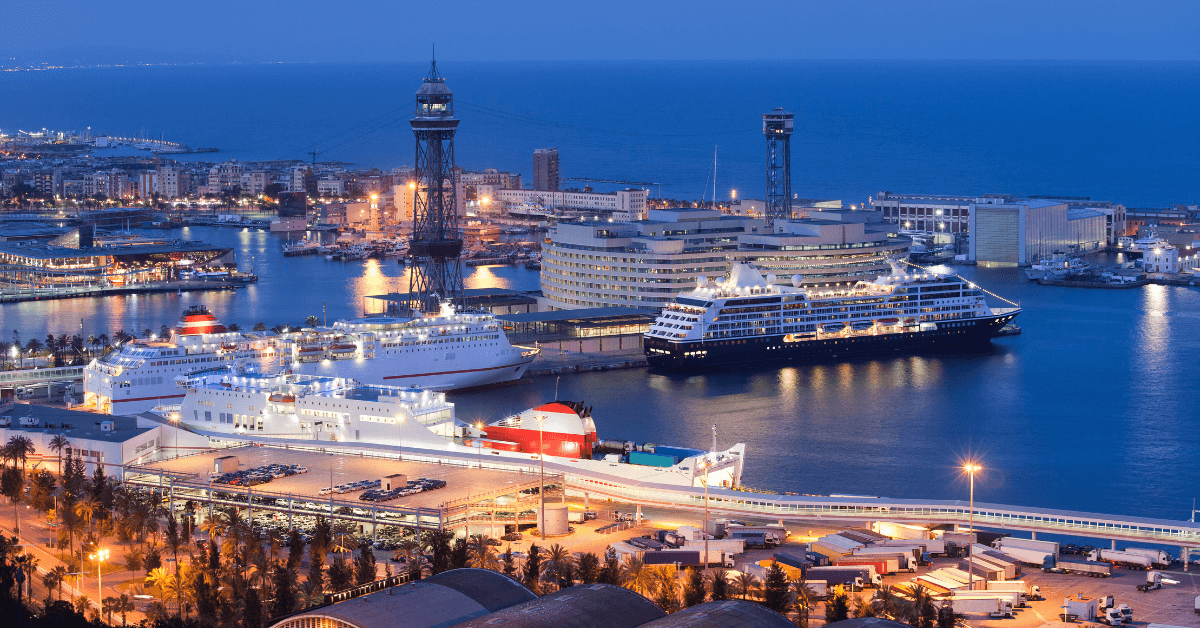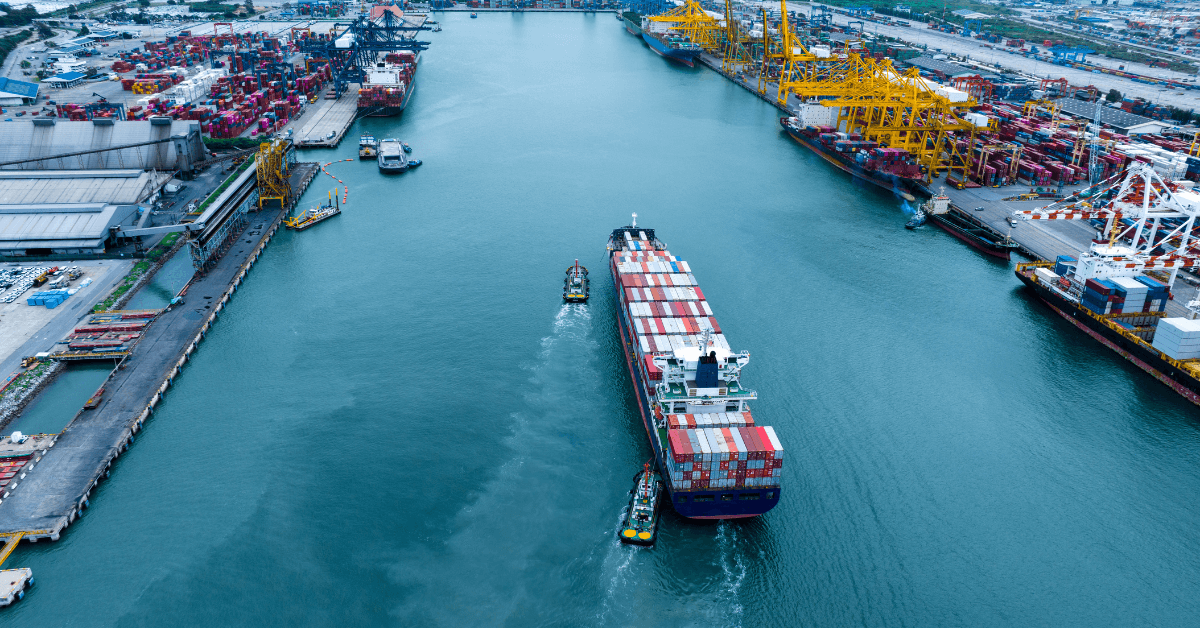How Port and Terminal Operators Can Control Emissions?

While the maritime industry has, in the past few years, been the subject of intense scrutiny for its GHG emissions, most of the regulatory focus has been on the shipping sector.
While this is not unusual given that it is the maritime transport leg of the supply chain that accounts for the bulk of emissions (primarily through its bunker consumption), there are other stakeholders that also contribute to emissions (albeit not of the same magnitude as shipping).
This set of stakeholders includes Maritime Ports and Terminal operators, who act as the link between sea and land transport, facilitating EXIM movement by functioning as gateways for vessels to berth at and discharge cargo.
Ports and terminals are capital-intensive assets, requiring significant investments for the acquisition of land, development of facilities, and purchasing of container handling equipment, all of which entail extensive construction activity.
Once constructed and operational, regular container/ cargo handling activity at the port and various ancillary activities also generate emissions.
These ongoing operational activities include the use of cranes and vehicles for moving cargo/ containers within the port premises, fuel consumed by cranes of various types, reach stackers, trucks, and other vehicles, administrative activities, etc., all of which are critical to the smooth functioning of the port.
Thus, the construction and operations of ports and terminals give rise to emissions right from the onset, attributable to the various activities that fall under the port’s scope.
Besides this, the port is considered to be indirectly responsible for emissions emanating from the activities of other entities operating from or using their premises and facilities.
Therefore, while designing and constructing the port and terminals therein, it is advisable to bear in mind the UN’s Sustainable Development Goals (SDGs), an internationally agreed-upon set of goals ratified in 2015 as part of the United Nations 2030 Agenda for Sustainable Development.
Whether setting up a greenfield port, evaluating a port expansion project, or setting daily operational processes, it is essential to consider the impact on the SDGs.
To illustrate this point with specific examples, when conducting feasibility studies for a greenfield port, it is crucial to gauge the impact on the ecology and local society in the region.
Likewise, if the port doesn’t have a natural deep draught, dredging will have to be undertaken at frequent intervals, which will also impact the environment.
Once commissioned, the port can generate significant amounts of waste, which will have to be disposed of responsibly, for which appropriate arrangements will need to be made while designing and constructing the port.
As with all other industries, emissions from ports are categorised into:
1) Scope 1: emissions directly emanating from the port’s operations
2) Scope 2: the port’s indirect emissions from power generation
3) Scope 3: Other indirect emissions
Given their unique position at the intersection of the sea and land legs, ports can not only regulate their own emissions but also help other stakeholders such as Carriers and Truckers in reducing their emissions.
There are certain measures that port authorities and terminal operators can undertake to reduce direct and indirect emissions, which are explained below:
1. Minimising or optimising energy consumption
Since port activities involve the consumption of extensive amounts of energy, it is essential that energy usage be minimised or optimised. This can be done by designing efficient processes that minimise movements and thus help reduce the consumption of energy.
For example, this would entail minimising housekeeping moves, where storage of containers in the port premises is planned such that each container can be easily accessed without the need to move other containers.
2. Green/ renewable energy sources
Given the sizeable energy requirements at ports and terminals, an increasing number of port authorities and terminal operators are looking at replacing conventional fuel-based energy sources with green or renewable energy. The objective is to use energy from clean sources, which will reduce the quantity of emissions and thus reduce pollution.
One such source is solar energy, which involves upfront investment in installation of solar panels, but thereafter generates benefits in the form of lower consumption of conventional energy, lower electricity costs, and reduced emissions.
In the UK, the Portsmouth International Port was the first in the country to utilise solar canopies to power its operations. In the US, the port of Corpus Christi, Texas, is another example of a port exploring solar energy.
3. Sensor-activated / Smart lighting systems:
Given the inherently hazardous nature of work in ports and the potential dangers involved, ports need to have adequate lighting to ensure visibility at all times so that employees and workers avoid accidents due to lack of visibility/ poor light. This obviously implies the consumption of large amounts of electricity.

A growing number of ports are, therefore, replacing standard lighting systems with smart lighting systems that are equipped with activity sensors, where lights switch on automatically when they sense movement and switch off when there is no movement. This helps ports reduce energy consumption, helping strike the right balance between safety and electricity consumption.
4. Cold ironing at Ports
Also known as Alternative Maritime Power or Shoreside Supply, cold ironing involves vessels utilising shore-based power while berthed at the port. The port makes arrangements for the vessel to use power from non/ less-polluting sources (potentially solar power, in the best-case scenario). The vessel is, therefore, able to avoid using bunkers, thus helping reduce emissions.
Cold ironing has been popular in North American and European ports, and China is also now focussing on this by including it in its 5-year plans.
5. Increasing port productivity and efficiency levels
A direct correlation exists between the productivity and efficiency levels at ports and emission levels. As ports and terminals strive to increase their productivity and overall efficiency, their activity levels reduce, thus resulting in lower emissions.
With faster handling of containers on board vessels, loading and unloading of cargo is finished quickly, reducing the vessel’s time at berth or port premises, resulting in lower emissions.
Also, if time is saved at the port, the vessel can subsequently sail at lower speeds and still maintain schedule reliability. Sailing at lower speeds reduces bunker consumption, which in turn lowers emissions.
Sharing data on time and as relevant also enables freight forwarders, onward transport providers, and consignees to proactively plan cargo movement as per timelines provided, which ensures prompt and timely evacuation of containers and also helps reduce waiting and idle time for trucks – all of which help reduce emissions.
6. Use of technology
The key to boosting efficiency and facilitating proactive planning is to utilise technological solutions to assist in operations management.
The market is replete with logtech solutions of varying functionalities and aimed at either the holistic supply chain or specific aspects thereof. Depending on requirements and the relative criticality of each activity, Terminal operators can select software that best meets their requirements.
Using technology can help optimise container and vehicle movements, as well as storage of containers, which reduces fuel consumption.

Likewise, using RFID tracking can help provide visibility to container status and location, which makes it easier to locate and move the container promptly.
In these and other ways, technology can assist in better planning and vessel and container handling, thus reducing wasteful movement, accelerating cargo movement, and generally reducing associated emissions.
7. Green corridors
Green corridors are an innovative concept intended to make the transit between 2 ports more eco-friendly and less polluting. A green shipping corridor connects 2 ports such that it facilitates lower (or zero) emissions by creating an entire ecosystem that is geared towards emission control, encompassing regulatory measures, ensuring the availability of green fuel along the route, and financial incentives.
Given their relative novelty and the extent of work involved, the idea is still catching on, with initially only the biggest ports evaluating its feasibility in connecting to their biggest destinations (such as on the Asia-Europe trade lane).
You might also like to read-
- Minimum Quantity Commitment (MQC) and Liquidated Damages in Container Shipping: Concept and Relevance
- The Essential Guide to Shipping Container Dimensions – What You Need to Know
- Commoditisation of Container Shipping: Implications for Carriers and Cargo owners
- 10 Top Eco-Friendly Cruise Ships
- Green Float: Eco-friendly Floating Cities at the Sea
Disclaimer: The author’s views expressed in this article do not necessarily reflect the views of Marine Insight. Data and charts, if used in the article, have been sourced from available information and have not been authenticated by any statutory authority. The author and Marine Insight do not claim it to be accurate nor accept any responsibility for the same. The views constitute only the opinions and do not constitute any guidelines or recommendations on any course of action to be followed by the reader.
The article or images cannot be reproduced, copied, shared or used in any form without the permission of the author and Marine Insight.
Do you have info to share with us ? Suggest a correction

About Author
Jitendra has over 20 years of international experience in the Container Shipping, Ports and Logistics industry, spanning 3 diverse geographies, wherein he has been involved in the commercial and strategic aspects of the container business.
Latest Maritime law Articles You Would Like:
Latest News
- Why Dry Ice Is Used For Packaging
- What is the Purpose of DG Shipping?
- What are Logistics Risks?
- How Port and Terminal Operators Can Control Emissions?
- Minimum Quantity Commitment (MQC) and Liquidated Damages in Container Shipping: Concept and Relevance
- MARPOL (The International Convention for Prevention of Marine Pollution For Ships): The Ultimate Guide
Subscribe To Our Newsletters
By subscribing, you agree to our Privacy Policy and may receive occasional deal communications; you can unsubscribe anytime.















